1.
Introduction
Lagrange's theorem is one of the most fundamental theorem of Abstract algebra. In the late 18th century, Lagrange's theorem first appeared to handle the polynomial equation of degree five or more and its relation with symmetric functions. But, Lagrange stated his version of the theorem before the invention of group theory. This theorem developed over the decades. Pietro first gave the complete proof of this theorem. This theorem is an important tool for the study of finite groups as it gives an overview of the size of subgroups. Lagrange's theorem has various applications in number theory. This theorem has a significant role in the proof of Fermat's Little theorem. For further details, we refer to [1,2].
Uncertainty is a part of our daily life. This world is neither based on hypothesis nor on accurate measurements. There is not always possible to make an obvious decision. Handling the errors in decision-making situation is a real challenge for us. In 1965, Zadeh [3] first introduced the notion of fuzzy set to handle vagueness in real-life problems, where he broke the conventional idea of yes or not that is zero or one. He defined fuzzy set as a mapping from any set to [0,1]. So the membership value of an element is any number between 0 and 1. After that fuzzy set becomes a trend in worldwide research. In 1971, Rosenfeld [4] first studied the concept of fuzzy subgroup and investigated various properties of it. In 1979, the notion of fuzzy subgroup was redefined by Anthony and Sherwood [5,6]. Fuzzy level subgroups were introduced by Das [7]. In 1992, Ajmal and Prajapati [8] introduced the ideas of fuzzy normal subgroup, fuzzy coset and fuzzy quotient subgroup. In 1988, Choudhury et al. [9] proved various properties of fuzzy subgroups and fuzzy homomorphisms. In 1990, Dixit et al. [10] discussed fuzzy level subgroups and union of fuzzy subgroups. The notion of anti-fuzzy subgroup was first proposed by Biswas [11]. Chakraborty and Khare [12] studied various properties of fuzzy homomorphisms. Ajmal [13] also studied homomorphisms of fuzzy subgroups. In 1994, Kim [14] defined the order of fuzzy subgroups and fuzzy p-subgroups. Many more results on fuzzy subgroups were introduced by Mukherjee [15,16] and Bhattacharya [17,18]. In 1999, Ray [19] introduced the product of fuzzy subgroups. In recent years many researchers studied various properties of fuzzy groups. In 2015, Tarnauceanu [20] classified fuzzy normal subgroups of finite groups. In 2016, Onasanya [21] reviewed some anti fuzzy properties of fuzzy subgroups. Shuaib [22] and Shaheryar [23] studied the properties of omicron fuzzy subgroups and omicron anti fuzzy subgroups. In 2018, Addis [24] developed fuzzy homomorphism theorems on groups.
In decision-making problems, sometimes assigning membership values is not enough. In 1986, assigning non-membership degree with membership degree Atanassov [25] developed intuitionistic fuzzy set. Using this concept, intuitionistic fuzzy subgroups were studied by Zhan and Tan [26]. In 2013, Yager [27] defined Pythagorean fuzzy set. This set gives a modern way to model vagueness and uncertainty with high precision and accuracy compared to intuitionistic fuzzy sets. In 2021, Bhunia et al. [28] introduced Pythagorean fuzzy subgroups. In recent years, some results related to Pythagorean fuzzy sets were given by [29,30,31,32]. In 2021, Bhunia [33] and Ghorai first initiated the study of (α,β)-Pythagorean fuzzy sets, where they imposed the restrictions α and β for more accuracy. They proved that (α,β)-Pythagorean fuzzy sets are more precise than intuitionistic fuzzy sets and Pythagorean fuzzy sets. They defined the notion of (α,β)-Pythagorean fuzzy subgroup and proved various algebraic aspects of it. One of the most important results of finite group theory is the Lagrange's theorem. Our main motive of this paper is to give an (α,β)-Pythagorean fuzzy version of Lagrange's theorem in (α,β)-Pythagorean fuzzy subgroups. We introduce the concept of relative subgroup of a group and define the (α,β)-Pythagorean fuzzy order of an element in (α,β)-Pythagorean fuzzy subgroups. We make a comparison between order of an element in a group and (α,β)-Pythagorean fuzzy order of that element in (α,β)-Pythagorean fuzzy subgroup. We define the extension principle in (α,β)-Pythagorean fuzzy environments and study the effect of group homomorphism on (α,β)-Pythagorean fuzzy subgroups. We introduce (α,β)-Pythagorean fuzzy quotient group and the index of an (α,β)-Pythagorean fuzzy subgroup. Finally, we give an approach to Lagrange's theorem in (α,β)-Pythagorean fuzzy subgroups.
An outline of this paper is given as follows: we recall some important definitions and concepts in Section 2. In Section 3, we define the notion of (α,β)-Pythagorean fuzzy order of elements of groups and discuss many properties of it. Section 4 deals with some algebraic attributes of (α,β)-Pythagorean fuzzy subgroup. In Section 5, we introduce the concept of (α,β)-Pythagorean fuzzy quotient group and give an (α,β)-Pythagorean fuzzy version of Lagrange's theorem. Finally, we make a conclusion in Section 6.
2.
Preliminaries
In this section, we recall some basic definitions which are used for the development of later sections.
Definition 2.1. [33] Let S be a crisp set and α, β∈[0,1] be such that 0≤α2+β2≤1. An (α,β)-Pythagorean fuzzy set ψ∗ in S is an object having the form ψ∗={(u,μα(u),νβ(u)|u∈S} where μα(u)=μ(u)∧α and νβ(u)=ν(u)∨β are membership degree and non-membership degree of u∈S respectively, which satisfies the condition 0≤(μα(u))2+(νβ(u))2≤1.
Definition 2.2. [33] Let ψ∗ be an (α,β)-Pythagorean fuzzy set of a group G. Then ψ∗ is said to be an (α,β)-Pythagorean fuzzy subgroup of the group G if the following conditions hold:
● μα(uv)≥μα(u)∧μα(v) and νβ(uv)≤νβ(u)∨νβ(v) for all u,v∈G
● μα(u−1)≥μα(u) and νβ(u−1)≤νβ(u) for all u∈G.
Throughout this paper, we will write (α,β)-Pythagorean fuzzy set as (α,β)-PFS and (α,β)-Pythagorean fuzzy subgroup as (α,β)-PFSG. Also, we will denote (α,β)-PFS as ψ∗=(μα,νβ) instead of ψ∗={(a,μα(a),νβ(a)|a∈S}.
Proposition 2.1. [33] Let ψ∗=(μα,νβ) be an (α,β)-PFS of a group G. Then ψ∗ is an (α,β)-PFSG of G if and only if μα(uv−1)≥μα(u)∧μα(v) and νβ(uv−1)≤νβ(u)∨νβ(v) for all u,v∈G.
Definition 2.3. [33] Let ψ∗=(μα,νβ) be an (α,β)-PFSG of a group G. Then for u∈G, (α,β)-Pythagorean fuzzy left coset (PFLC) of ψ∗ is the (α,β)-PFS uψ∗=(uμα,uνβ), defined by (uμα)(m)=μα(u−1m), (uνβ)(m)=νβ(u−1m) and (α,β)-Pythagorean fuzzy right coset (PFRC) of ψ∗ is the (α,β)-PFS ψ∗u=(μαu,νβu), defined by (μαu)(m)=μα(mu−1), (νβu)(m)=νβ(mu−1) for all m∈G.
Definition 2.4. [33] Let ψ∗=(μα,νβ) be an (α,β)-PFSG of a group G. Then ψ∗ is an (α,β)-Pythagorean fuzzy normal subgroup (PFNSG) of the group G if every (α,β)-PFLC of ψ∗ is also an (α,β)-PFRC of ψ∗ in G.
Equivalently, uψ∗=ψ∗u for all u∈G.
Proposition 2.2. [33] Let ψ∗=(μα,νβ) be an (α,β)-PFSG of a group G. Then ψ∗ is an (α,β)-PFNSG of G if and only if μα(uv)=μα(vu) and νβ(uv)=νβ(vu) for all u,v∈G.
Proposition 2.3. [33] Let ψ∗=(μα,νβ) be an (α,β)-PFSG of a group G. Then ψ∗ is an (α,β)-PFNSG of G if and only if μα(vuv−1)=μα(u) and νβ(vuv−1)=νβ(u) for all u,v∈G.
3.
(α,β)-Pythagorean fuzzy order of an element in (α,β)-Pythagorean fuzzy subgroups
In this section, we introduce the concept of relative subgroup of a group and define the (α,β)-Pythagorean fuzzy order of elements in (α,β)-Pythagorean fuzzy subgroups. Further, We compare between the fuzzy order of elements in fuzzy subgroups and (α,β)-Pythagorean fuzzy order of elements in (α,β)-Pythagorean fuzzy subgroups. Moreover, we discuss various algebraic properties of (α,β)-Pythagorean fuzzy order of elements in (α,β)-PFSGs.
First of all, we will construct a theorem which will be the building block of this section.
Theorem 3.1. Let ψ∗=(μα,νβ) be an (α,β)-PFSG of a group G and u be any element of G. Then Ω(u)={v∈G|μα(v)≥μα(u), νβ(v)≤νβ(u)} forms a subgroup of the group G.
Proof. For any element u∈G, we have Ω(u)={v∈G|μα(v)≥μα(u), νβ(v)≤νβ(u)}.
Clearly u∈Ω(u), so Ω(u) is a non empty subset of G.
Since ψ∗=(μα,νβ) is an (α,β)-PFSG of the group G, then μα(e)≥μα(u) and νβ(e)≤νβ(u), where e is the identity element of G. So, e∈Ω(u).
Let m and n be two arbitrary elements of Ω(u). Therefore
Similarly, we can show that νβ(mn−1)≤νβ(u).
Consequently mn−1∈Ω(u).
Hence Ω(u) is a subgroup of the group G.
Definition 3.1. Let ψ∗=(μα,νβ) be an (α,β)-PFSG of a group G and u be any element of G. Then the subgroup Ω(u) is called the relative subgroup of the group G corresponding to the element u.
Definition 3.2. Let ψ∗=(μα,νβ) be an (α,β)-PFSG of a group G and u be any element of G. Then the (α,β)-Pythagorean fuzzy order of u in ψ∗ is denoted by (α,β)-PFO (u)ψ∗ and defined by the order of the relative subgroup of u in G.
Therefore, (α,β)-PFO (u)ψ∗=O(Ω(u)) for all u in G.
Example 3.1. Let us consider the Klein's 4-group V4={e,a,b,c}, where e is the identity element of V4 and each element has its own inverse. Define the membership degree and non-membership degree of the elements of V4 by
We choose α=0.8 and β=0.5. Then an (α,β)-PFS ψ∗=(μα,νβ) of V4 is given by
Clearly, ψ∗=(μα,νβ) is an (α,β)-PFSG of the group V4.
Then the (α,β)-Pythagorean fuzzy order of the elements of V4 in ψ∗ is given by
(α,β)-PFO (e)ψ∗=O(Ω(e))=2, (α,β)-PFO (a)ψ∗=O(Ω(a))=4,
(α,β)-PFO (b)ψ∗=O(Ω(b))=4 and (α,β)-PFO (c)ψ∗=O(Ω(c))=2.
Now, we will make a comparison between order and (α,β)-Pythagorean fuzzy order of an element in a group.
From the above example, we can see that (α,β)-PFO (e)ψ∗≠O(e) and (α,β)-PFO (e)ψ∗=(α,β)-PFO (c)ψ∗=2. Again there is no element of order four in the Klein's 4-group but here (α,β)-Pythagorean fuzzy order of a and b in ψ∗ is four.
Remark 3.1. For any group, the identity element is the unique element of order one but in (α,β)-PFSG the (α,β)-Pythagorean fuzzy order of identity element may not be equal to one. Also, (α,β)-Pythagorean fuzzy order of an element in (α,β)-PFSG may not be equal to the order of that element in the group.
Proposition 3.1. Let ψ∗=(μα,νβ) be an (α,β)-PFSG of a group G. Then (α,β)-PFO (e)ψ∗≤(α,β)-PFO (u)ψ∗ for all u∈G, where e is the identity of G.
Proof. Let (α,β)-PFO (e)ψ∗=p, where p is a positive integer.
Assume that Ω(e)={u1,u2,…,up}, where ui≠uj for all i, j.
Then μα(u1)=μα(u2)=⋯=μα(up)=μα(e) and
νβ(u1)=νβ(u2)=⋯=νβ(up)=νβ(e).
Since ψ∗=(μα,νβ) is an (α,β)-PFSG of the group G, then
μα(e)≥μα(u) and νβ(e)≤νβ(u) for all u∈G.
So, u1, u2, …, up∈Ω(u). Thus Ω(e)⊆Ω(u).
Consequently, O(Ω(e))≤O(Ω(u)) for all u∈G.
Hence (α,β)-PFO (e)ψ∗≤(α,β)-PFO (u)ψ∗ for all u∈G.
Theorem 3.2. Let ψ∗=(μα,νβ) be an (α,β)-PFSG of a group G. Then for all u∈G, (α,β)-PFO (u)ψ∗=(α,β)-PFO (u−1)ψ∗.
Proof. Let u be an element of G.
Then (α,β)-PFO (u)ψ∗=O(Ω(u)), where Ω(u)={v∈G|μα(v)≥μα(u), νβ(v)≤νβ(u)}.
Since ψ∗=(μα,νβ) is an (α,β)-PFSG of the group G, therefore μα(u)=μα(u−1) and νβ(u)=νβ(u−1).
So Ω(u)={v∈G|μα(v)≥μα(u−1), νβ(v)≤νβ(u−1)}=Ω(u−1).
This implies that, O(Ω(u))=O(Ω(u−1)).
Hence, (α,β)-PFO (u)ψ∗=(α,β)-PFO (u−1)ψ∗.
Since u is an arbitrary element of G,
(α,β)-PFO (u)ψ∗=(α,β)-PFO (u−1)ψ∗ for all u∈G.
Now, we will now introduce (α,β)-Pythagorean fuzzy order of (α,β)-PFSG of a group.
Definition 3.3. Let ψ∗=(μα,νβ) be an (α,β)-PFSG of a group G. Then (α,β)- Pythagorean fuzzy order of the (α,β)-PFSG ψ∗ is denoted by (α,β)-PFO (ψ∗) and is defined by (α,β)-PFO (ψ∗)=∨{(α,β)-PFO (u)ψ∗|u∈G}.
Example 3.2. We consider the (α,β)-PFSG ψ∗ of Klein's 4-group V4 in Example 3.1.
(α,β)-Pythagorean fuzzy order of the elements of V4 in ψ∗ is given by
(α,β)-PFO (e)ψ∗=2, (α,β)-PFO (a)ψ∗=4, (α,β)-PFO (b)ψ∗=4 and (α,β)-PFO (c)ψ∗=2.
Therefore (α,β)-PFO (ψ∗)=∨{(α,β)-PFO (u)ψ∗|u∈V4}=4.
Theorem 3.3. For any (α,β)-PFSG of a group, (α,β)-Pythagorean fuzzy order of that (α,β)-PFSG is same as the order of the group.
Proof. Suppose ψ∗=(μα,νβ) be an (α,β)-PFSG of a group G.
Let u be any element of G.
Without loss of generality, we may assume that
μα(v)≥μα(u) and νβ(v)≤νβ(u) for all v∈G.
Since Ω(u)={v∈G|μα(v)≥μα(u), νβ(v)≤νβ(u)}, then Ω(u)=G.
Also, |Ω(u)|≥|Ω(v)| for all v∈G.
Consequently (α,β)-PFO (ψ∗)=(α,β)-PFO (u)ψ∗.
Again (α,β)-PFO (u)ψ∗=O(Ω(u)).
Therefore (α,β)-PFO (ψ∗)=O(G).
Hence (α,β)-Pythagorean fuzzy order of any (α,β)-PFSG of a group is the same as the order of the group.
Remark 3.2. For any (α,β)-PFSG of a group G, (α,β)-Pythagorean fuzzy order of each element of G divides (α,β)-Pythagorean fuzzy order of the (α,β)-PFSG.
Theorem 3.4. Let ψ∗=(μα,νβ) be an (α,β)-PFSG of a group G and u be an element of G such that (α,β)-PFO (u)ψ∗=p. If gcd(p,q)=1 for a positive integer q, then μα(uq)=μα(u) and νβ(uq)=νβ(u).
Proof. Since (α,β)-PFO (u)ψ∗=p, then we have up=e.
Again ψ∗=(μα,νβ) is an (α,β)-PFSG of a group G, then
μα(uq)≥μα(u) and νβ(uq)≤νβ(u) for any positive integer q.
Also gcd(p,q)=1, then there exists positive integers a and b such that ap+bq=1. Now
Therefore μα(u)≥μα(uq). Similarly, we can show that νβ(u)≤νβ(uq).
Hence μα(uq)=μα(u) and νβ(uq)=νβ(u).
Theorem 3.5. Let ψ∗=(μα,νβ) be an (α,β)-PFSG of a group G and u be any element of G. If for an integer q, μα(uq)=μα(e) and νβ(uq)=νβ(e) then q|(α,β)-PFO (u)ψ∗.
Proof. Let (α,β)-PFO (u)ψ∗=p.
Without loss of generality, we may assume that q is the minimum integer for which μα(uq)=μα(e) and νβ(uq)=νβ(e) holds.
By division algorithm, there exists two integers m and r such that p=mq+r where 0≤r<q. Now \newpage
Similarly, we can show that νβ(ur)≤νβ(e).
Consequently, μα(ur)=μα(e) and νβ(ur)=νβ(e).
This result contradicts the minimality of q as 0≤r<q.
Therefore r must be zero, so p=mq.
Hence q|(α,β)-PFO (u)ψ∗.
In the next result, we will show how to find (α,β)-Pythagorean fuzzy order of integral power of an element.
Theorem 3.6. Let ψ∗=(μα,νβ) be an (α,β)-PFSG of a group G and u be any element of G. If (α,β)-PFO (u)ψ∗=p then for an integer k, (α,β)-PFO (uk)ψ∗=pgcd(p,k).
Proof. Let (α,β)-PFO (uk)ψ∗=m and assume that gcd(p,k)=g.
Since (α,β)-PFO (u)ψ∗=p, then up=e where e is the identity of G. Now
Similarly, we can show that νβ((uk)pg)=νβ(e).
Therefore by Theorem 3.5, we can say pg divides m.
Also we have gcd(p,k)=g, then there exists two integers s and t such that ps+kt=g. Therefore
Therefore the only possibility is μα(ugm)=μα(e).
Similarly, we can prove that νβ(ugm)=νβ(e).
Thus using Theorem 3.5 we have gm|p, that is m|pg.
Therefore m=pg.
Hence (α,β)-PFO (uk)ψ∗=pgcd(p,k).
Theorem 3.7. Let ψ∗=(μα,νβ) be an (α,β)-PFSG of a group G and u be any element of G. If (α,β)-PFO (u)ψ∗=p and r≅s(mod p) then (α,β)-PFO (ur)ψ∗=(α,β)-PFO (us)ψ∗, where r,s∈Z.
Proof. Let (α,β)-PFO (ur)ψ∗=x and (α,β)-PFO (us)ψ∗=y.
Since r≅s(mod p) then r=pq+s for some integer q. Now
Therefore the only possibility is μα((ur)y)=μα(e).
Similarly, we can prove νβ((ur)y)=νβ(e).
By using Theorem 3.5, we have y|x.
In the same manner, we can prove that x|y. Thus x=y.
Hence (α,β)-PFO (ur)ψ∗=(α,β)-PFO (us)ψ∗, where r,s∈Z.
Theorem 3.8. Let ψ∗=(μα,νβ) be an (α,β)-PFNSG of a group G and u be any element of G. Then (α,β)-PFO (u)ψ∗=(α,β)-PFO (vuv−1)ψ∗ for all v∈G.
Proof. Let v be an arbitrary element of G.
Since ψ∗ is an (α,β)-PFNSG of the group G, then μα(u)=μα(vuv−1) and νβ(u)=νβ(vuv−1).
Therefore the relative subgroups corresponding to u is the same as that of vuv−1.
This implies that Ω(u)=Ω(vuv−1).
Consequently, O(Ω(u))=O(Ω(vuv−1)).
Since v is an arbitrary element of G, hence (α,β)-PFO (u)ψ∗=(α,β)-PFO (vuv−1)ψ∗ for all v∈G.
Theorem 3.9. Let ψ∗=(μα,νβ) be an (α,β)-PFNSG of a group G. Then (α,β)-PFO (uv)ψ∗=(α,β)-PFO (vu)ψ∗ for all u,v∈G.
Proof. Let u and v be any two elements of G.
We have μα(uv)=μα((v−1v)(uv))=μα(v−1(vu)v).
Similarly, νβ(uv)=νβ(v−1(vu)v).
Therefore Ω(uv)=Ω(v−1(vu)(v−1)−1).
Consequently, (α,β)-PFO (uv)ψ∗=(α,β)-PFO (v−1(vu)(v−1)−1)ψ∗.
Again by Theorem 3.8, we have (α,β)-PFO (v(vu)v−1)ψ∗=(α,β)-PFO (vu)ψ∗.
Since u and v are arbitrary elements of G, hence (α,β)-PFO (uv)ψ∗=(α,β)-PFO (vu)ψ∗ for all u,v∈G.
Theorem 3.10. Let ψ∗=(μα,νβ) be an (α,β)-PFSG of an abelian group G and u,v be two elements of G such that gcd((α,β)-PFO (u)ψ∗,(α,β)-PFO (v)ψ∗)=1. If μα(uv)=μα(e) and νβ(uv)=νβ(e) then (α,β)-PFO (u)ψ∗=(α,β)-PFO (v)ψ∗=1.
Proof. Let (α,β)-PFO (u)ψ∗=p and (α,β)-PFO (v)ψ∗=q.
So, we have gcd(p,q)=1. Now
Therefore the only possibility is μα(uqvq)=μα(e). Again
So, we have μα(uq)=μα(e). Similarly, we can prove that νβ(uq)=νβ(e).
Therefore by Theorem 3.5, we have q|p. Again gcd(p,q)=1, thus q=1.
Similarly, we can show that p=1.
Hence (α,β)-PFO (u)ψ∗=(α,β)-PFO (v)ψ∗=1.
Theorem 3.11. Let ψ∗=(μα,νβ) be an (α,β)-PFSG of a cyclic group G. Then any two generators of the cyclic group G have same (α,β)-Pythagorean fuzzy order in ψ∗.
Proof. Let G be a finite cyclic group of order n.
Also, let u and v be two generators of G. Therefore un=e and vn=e.
Since u is a generator of G, then v=uk for some positive integer k.
So, k and n are co-prime that is gcd(k,n)=1.
Therefore by applying Theorem 3.10, (α,β)-PFO (u)ψ∗=(α,β)-PFO (uk)ψ∗=(α,β)-PFO (v)ψ∗.
Now, if G is an infinite cyclic group then it has only two generators.
Suppose u is a generator of G then u−1 is the only other generator.
Therefore by using Theorem 3.2, we have (α,β)-PFO (u)ψ∗=(α,β)-PFO (u−1)ψ∗.
Hence (α,β)-Pythagorean fuzzy order of any two generators of a cyclic group is equal.
4.
Some algebraic aspects of (α,β)-Pythagorean fuzzy subgroups (PFSG)
In this section, we define the extension principle in (α,β)-Pythagorean fuzzy environment. We study the effect of group homomorphism on (α,β)-Pythagorean fuzzy subgroups. Further, we develop the concept of (α,β)-Pythagorean fuzzy normalizer and (α,β)-Pythagorean fuzzy centralizer. Moreover, we investigate many algebraic attributes of it.
Definition 4.1. Let ψ∗1=(μα1,νβ1) and ψ∗2=(μα2,νβ2) be two (α,β)-Pythagorean fuzzy sets on G1 and G2 respectively. Let h be a mapping from G1 to G2. Then h(ψ∗1) is an (α,β)-Pythagorean fuzzy set on G2 and defined by h(ψ∗1)(v)=(h(μα1)(v),h(νβ1)(v)) for all v∈G2, where
and
Also, h−1(ψ∗2) is an (α,β)-Pythagorean fuzzy set on G1 and defined by
h−1(ψ∗2)(u)=(h−1(μα2)(u),h−1(νβ2)(u)) for all u∈G1, where
(h−1(μα2))(u)=(μα2(h(u)) and (h−1(νβ2))(u)=(νβ2(h(u)).
Example 4.1. We consider two groups G1=(Z,+) and G2=({1,−1},.).
Let h be a mapping from G1 to G2 defined by
Let ψ∗1=(μα1,νβ1) and ψ∗2=(μα2,νβ2) be two (α,β)-Pythagorean fuzzy sets on G1 and G2 respectively, is given by
and μα2(1)=0.8, μα2(−1)=0.4, νβ2(1)=0.5, νβ2(−1)=0.6.
Then h(ψ∗1) is an (α,β)-Pythagorean fuzzy set on G2 is given by h(μα1)(1)=0.9, h(μα1)(−1)=0.6, h(νβ1)(1)=0.2 and h(νβ1)(−1)=0.7.
Also, h−1(ψ∗2) is an (α,β)-Pythagorean fuzzy set on G1 is given by
Theorem 4.1. Let ψ∗=(μα,νβ) be an (α,β)-PFSG of a group G1 and h be a group homomorphism from G1 onto G2. Then h(ψ∗) is an (α,β)-PFSG of the group G2.
Proof. Since h:G1→G2 is an onto homomorphism, therefore h(G1)=G2.
Let u2 and v2 be two elements of G2.
Suppose u2=h(u1) and v2=h(v1) for some u1, v1∈G1.
We have h(ψ∗)(v)=(h(μα)(v),h(νβ)(v)) for all v∈G2. Now
Therefore h(μα)(u2v2)≥h(μα)(u2)∧h(μα)(v2) for all u2 and v2∈G2.
Similarly, we can prove that h(νβ)(u2v2)≤h(νβ)(u2)∨h(νβ)(v2) for all u2 and v2∈G2. Again
Therefore h(μα)(u−12)=h(μα)(u2) for all u2∈G2.
Similarly, we can show that h(νβ)(u−12)=h(νβ)(u2) for all u2∈G2.
Hence h(ψ∗)=(h(μα),h(νβ)) is an (α,β)-PFSG of the group G2.
Theorem 4.2. Let ψ∗=(μα,νβ) be an (α,β)-PFSG of a group G2 and h be a bijective group homomorphism from G1 onto G2. Then h−1(ψ∗) is an (α,β)-PFSG of the group G1.
Proof. Let u1 and v1 be any two elements of G1.
We have h−1(ψ∗)(u)=(h−1(μα)(u),h−1(νβ)(u)) for all u∈G1. Now
Therefore h−1(μα)(u1v1)≥h−1(μα)(u1)∧h−1(μα)(v1) for all u1 and v1∈G1.
Similarly, we can show that h−1(νβ)(u1v1)≤h−1(νβ)(u1)∨h−1(νβ)(v1) for all u1 and v1∈G1. Again
Therefore h−1(μα)(u−11)=h−1(μα)(u1) for all u1∈G1.
Similarly, we can show that h−1(νβ)(u−11)=h−1(νβ)(u1) for all u1∈G1.
Hence h−1(ψ∗)=(h−1(μα),h−1(νβ)) is an (α,β)-PFSG of the group G1.
Definition 4.2. Let ψ∗=(μα,νβ) be an (α,β)-PFSG of a group G. Then the (α,β)-Pythagorean fuzzy normalizer of ψ∗ is denoted by ∇(ψ∗) and defined by
∇(ψ∗)={u| u∈G, μα(p)=μα(upu−1) and νβ(u)=νβ(upu−1) for all p∈G.
Example 4.2. We consider the (α,β)-PFSG ψ∗1=(μα1,νβ1) of the group G1=(Z,+) in Example 4.1.
Then the (α,β)-Pythagorean fuzzy normalizer of ψ∗ is ∇(ψ∗)=Z.
Theorem 4.3. Let ψ∗=(μα,νβ) be an (α,β)-PFSG of a finite group G. Then (α,β)-Pythagorean fuzzy normalizer ∇(ψ∗) is a subgroup of the group G.
Proof. Let u and v be two elements of ∇(ψ∗).
Then we have
and
Clearly e∈∇(ψ∗), so ∇(ψ∗) is a non-empty finite subset of G.
To show that ∇(ψ∗) is a subgroup of G, it is enough to show uv∈∇(ψ∗).
Now put p=vqv−1 in (4.1), we have
Then by applying (4.2) in (4.3), we get μα(q)=μα(uvqv−1u−1) and νβ(q)=νβ(uvqv−1u−1).
This implies that μα(q)=μα((uv)q(uv)−1) and νβ(q)=νβ((uv)q(uv)−1).
Therefore uv∈∇(ψ∗).
Hence ∇(ψ∗) is a subgroup of the group G.
Proposition 4.1. Let ψ∗=(μα,νβ) be an (α,β)-PFSG of a group G. Then ψ∗=(μα,νβ) is an (α,β)-PFNSG of the group G if and only if ∇(ψ∗)=G.
Proof. We have ∇(ψ∗)={u| u∈G, μα(p)=μα(upu−1) and νβ(u)=νβ(upu−1) for all p∈G.
Therefore ∇(ψ∗)⊆G.
Let ψ∗=(μα,νβ) be a (α,β)-PFNSG of a group G.
Then we have μα(u)=μα(vuv−1) and νβ(u)=νβ(vuv−1) for all u,v∈G.
This shows that G⊆∇(ψ∗).
Hence ∇(ψ∗)=G.
Conversely, let ∇(ψ∗)=G.
Then μα(u)=μα(vuv−1) and νβ(u)=νβ(vuv−1) for all u,v∈G.
Therefore ψ∗=(μα,νβ) is an (α,β)-PFNSG of the group G.
Proposition 4.2. Let ψ∗=(μα,νβ) be an (α,β)-PFSG of a group G. Then ψ∗ is an (α,β)-PFNSG of the group ∇(ψ∗).
Proof. Let u and v be any elements of ∇(ψ∗).
Then μα(w)=μα(uwu−1) and νβ(w)=νβ(uwu−1) for all w∈G.
Since ∇(ψ∗) is a subgroup of the group G, then vu∈∇(ψ∗).
Putting w=vu in the above relation we get
μα(vu)=μα(uvuu−1) and νβ(vu)=νβ(uvuu−1).
This implies that μα(vu)=μα(uv) and νβ(vu)=νβ(uv), which is a necessary condition for an (α,β)-PFSG to be an (α,β)-PFNSG of a group.
Hence ψ∗ is an (α,β)-PFNSG of the group ∇(ψ∗).
Definition 4.3. Let ψ∗=(μα,νβ) be an (α,β)-PFSG of a group G. Then (α,β)-Pythagorean fuzzy centralizer of ψ∗ is denoted by Cψ∗ and defined by Cψ∗={u| u∈G, μα(uv)=μα(vu) and νβ(uv)=νβ(vu)} for all v∈G.
Example 4.3. We consider the (α,β)-PFSG ψ∗ of the Klein's 4-group V4 in Example 3.1.
Then the (α,β)-Pythagorean fuzzy centralizer of ψ∗ is Cψ∗=V4.
Theorem 4.4. (α,β)-Pythagorean fuzzy centralizer of an (α,β)-PFSG of a group is a subgroup of that group.
Proof. Let ψ∗=(μα,νβ) be an (α,β)-PFSG of a group G.
Then (α,β)-Pythagorean fuzzy centralizer of ψ∗ is given by
Cψ∗={u| u∈G, μα(uv)=μα(vu) and νβ(uv)=νβ(vu)} for all v∈G.
Let p and q be any two elements of Cψ∗. Now for any r∈G, we have
Therefore μα((pq)r)=μα(r(pq)) for all r∈G.
Similarly, we can show that νβ((pq)r)=νβ(r(pq)) for all r∈G.
This shows that pq∈Cψ∗. Again for any s∈G, we have
Therefore μα(p−1s)=μα(sp−1) for all s∈G.
Similarly, we can prove that νβ(p−1s)=νβ(sp−1) for all s∈G.
This proves that for p∈Cψ∗, we have p−1∈Cψ∗.
Hence Cψ∗ is a subgroup of the group G.
5.
(α,β)-Pythagorean fuzzification of Lagrange's Theorem
In this section, we introduce the notion of (α,β)-Pythagorean fuzzy quotient group of an (α,β)-Pythagorean fuzzy subgroup and define the index of an (α,β)-Pythagorean fuzzy subgroup. We prove Lagrange's theorem for (α,β)-Pythagorean fuzzy subgroup.
Theorem 5.1. Let ψ∗=(μα,νβ) be an (α,β)-PFNSG of a finite group G and Φ be the collection of all (α,β)-Pythagorean fuzzy cosets of ψ∗ in G. Then Φ forms a group under the composition uψ∗∘vψ∗=(uv)ψ∗ for all u,v∈G.
Proof. To show (Φ,∘) is a group under the composition uψ∗∘vψ∗=(uv)ψ∗ for all u,v∈G, first we have to show that this is a well defined binary operation.
Let u,v,w,x be elements of G such that uψ∗=wψ∗ and vψ∗=xψ∗.
That is uμα(p)=wμα(p), uνβ(p)=wνβ(p) and vμα(p)=xμα(p), vνβ(p)=xνβ(p)∀p∈G.
This implies that for all p∈G,
and
We have to show that uψ∗∘vψ∗=wψ∗∘xψ∗.
That is (uv)ψ∗=(wx)ψ∗.
We have (uv)μα(p)=μα(v−1u−1p) and (wx)μα(p)=μα(x−1w−1p)∀p∈G. Now
So,
Putting p=u−1wx in (5.2), we get
Since ψ∗=(μα,νβ) is an (α,β)-PFNSG of G, then μα(x−1u−1wx)=μα(u−1w).
Putting p=w in (5.1), we get
Consequently, μα(v−1u−1wx)=μα(e).
So from (5.3), we have μα(v−1u−1p)≥μα(x−1w−1p).
Similarly, we can show that μα(x−1w−1p)≥μα(v−1u−1p).
Therefore μα(v−1u−1p)=μα(x−1w−1p), ∀p∈G.
Similarly, we can prove that νβ(v−1u−1p)=νβ(x−1w−1p), ∀p∈G.
This shows that, (uv)μα(p)=(wx)μα(p) and (uv)νβ(p)=(wx)νβ(p), ∀p∈G.
Consequently, (uv)ψ∗=(wx)ψ∗.
Hence the composition is well defined on Φ.
Since G is a finite group, then there is no ambiguity in closed and associativity of the composition on Φ.
Clearly, eψ∗ is the identity of Φ.
Also, inverse of any element uψ∗ of Φ is u−1ψ∗∈Φ.
That is (uψ∗)∘(u−1ψ∗)=eψ∗.
Hence (Φ,∘) is a group under the composition uψ∗∘vψ∗=(uv)ψ∗ for all u,v∈G.
Definition 5.1. Order of the group (Φ,∘), collection of all (α,β)-Pythagorean fuzzy cosets of an (α,β)-PFNSG ψ∗ in a finite group G is called the index of ψ∗ and denoted by [G:ψ∗].
Example 5.1. Let us consider the group G=(Z3,+3), where '+3' is addition of integers modulo 3.
Define the α-membership value and β-non-membership value of the elements of Z3 by
We can easily varify that ψ∗=(μα,νβ) is an (α,β)-PFNSG of the group G=(Z3,+3).
Then the collection of all (α,β)-Pythagorean fuzzy cosets of ψ∗, Φ={0ψ∗,1ψ∗,2ψ∗}.
Now (1μα)(1)=μα(1−1+31)=μα(2+31)=μα(0)=0.8 and (2μα)(1)=μα(2−1+31)=μα(1+31)=μα(2)=0.7.
Therefore (1μα)(1)≠(2μα)(1). This shows that 1ψ∗≠2ψ∗.
Hence the index of ψ∗, [G:ψ∗]=3.
Theorem 5.2. Let ψ∗=(μα,νβ) be an (α,β)-PFNSG of a finite group G. Then an (α,β)-PFS Ψ∗=(μα∗,νβ∗) of Φ defined by μα∗(uμα)=μα(u) and νβ∗(uνβ)=νβ(u) is an (α,β)-PFSG of the group (Φ,∘) for all u∈G.
Proof. Let uψ∗ and vψ∗ be any two elements of Φ, where u,v∈G. Now
Therefore μα∗((uμα)∘(vμα))≥μα∗(uμα)∧μα∗(vμα).
Similarly, we can show that νβ∗((uνβ)∘(vνβ))≤νβ∗(uνβ)∨νβ∗(vνβ).
Again, μα∗(u−1μα)=μα(u−1)=μα(u)=μα∗(uμα).
Similarly, we have νβ∗(u−1νβ)=νβ∗(uνβ).
Hence Ψ∗=(μα∗,νβ∗) is an (α,β)-PFSG of the group (Φ,∘).
Definition 5.2. Let ψ∗=(μα,νβ) be an (α,β)-PFNSG of a finite group G. Then the (α,β)-PFSG Ψ∗=(μα∗,νβ∗) of the group (Φ,∘) is called (α,β)-Pythagorean fuzzy quotient group of ψ∗.
Example 5.2. We consider the (α,β)-PFNSG ψ∗ of the group (Z,+3) in Example 5.1.
Therefore the collection of all (α,β)-Pythagorean fuzzy cosets of ψ∗, Φ={0ψ∗,1ψ∗,2ψ∗}.
We define an (α,β)-PFS Ψ∗=(μα∗,νβ∗) of Φ by μα∗(uμα)=μα(u) and νβ∗(uνβ)=νβ(u).
Then μα∗(0μα)=μα(0)=0.8, μα∗(1μα)=μα(1)=0.7, μα∗(2μα)=μα(2)=0.7 and
νβ∗(0νβ)=νβ(0)=0.1, νβ∗(1νβ)=νβ(1)=0.2, νβ∗(2νβ)=νβ(2)=0.2.
Now we can easily check that Ψ∗=(μα∗,νβ∗) is an (α,β)-PFSG of Φ.
Therefore Ψ∗=(μα∗,νβ∗) is the (α,β)-Pythagorean fuzzy quotient group of ψ∗.
Theorem 5.3. Let ψ∗=(μα,νβ) be an (α,β)-PFNSG of a finite group G and Φ be the collection of all (α,β)-Pythagorean fuzzy cosets of ψ∗ in G. We define a mapping Δ:G→Φ by Δ(u)=uψ∗ for all u∈G. Then Δ is a group homomorphism from G to Φ with kernel (Δ)={u∈G| μα(u)=μα(e), νβ(u)=νβ(e).
Proof. We have Δ:G→Φ defined by Δ(u)=uψ∗ for all u∈G.
Let u and v be any elements of G. Then we have Δ(uv)=(uv)ψ∗=(uψ∗)∘(vψ∗)=Δ(u)∘Δ(v).
This proves that Δ is a group homomorphism from G to Φ.
Now the kernel of Δ is given by
Hence ker(Δ)={u∈G|μα(u)=μα(e), νβ(u)=νβ(e)}.
Remark 5.1. ker(Δ) is a subgroup of the group G.
Theorem 5.4. (An approach to Lagrange's theorem in (α,β)-PFSG)
Let ψ∗=(μα,νβ) be an (α,β)-PFNSG of a finite group G. Then [G:ψ∗] divides O(G).
Proof. We have ψ∗=(μα,νβ) is an (α,β)-PFNSG of a finite group G.
Then Φ={uψ∗|u∈G}, the collection of all (α,β)-PFC of ψ∗ in G is also finite.
In Theorem 5.3, We have seen that there is a group homomorphism Δ from G to Φ by Δ(u)=uψ∗ for all u∈G.
We set M={u∈G|uψ∗=eψ∗}.
Then M=ker(Δ), which is a subgroup of G.
Now, we decompose G as a disjoint union of left cosets of G modulo m as follows
where umM=M.
We have to show that there is a one-one correspondence between cosets uiM of G and the elements of Φ.
We consider any coset uiM of G and any element m∈M.
Then we have Δ(uim)=uimψ∗=(uiψ∗)∘(mψ∗)=(uiψ∗)∘(eψ∗)=(uiψ∗).
This shows that Δ maps every element of uiM to the (α,β)-PFC uiψ∗.
Now, we construct a mapping Δ_ between {uiM| 1≤i≤m} and Φ by Δ_(uiM)=uiψ∗.
Let upψ∗=uqψ∗. Then we have u−1qupψ∗=eψ∗.
Therefore u−1qup∈M.
This implies that upM=uqM.
Hence Δ_(uiM)=uiψ∗ is a one-one mapping.
Therefore we can conclude that the number of distinct cosets is equal to the cardinality of Φ.
That is [G:M]=[G:ψ∗].
Since [G:M] divides O(G), then [G:ψ∗] must divide O(G).
Lagrange's theorem is a very useful theorem in finite group theory. Now we will give some applications of this theorem in (α,β)-Pythagorean fuzzy subgroups.
Corollary 5.1. Let ψ∗=(μα,νβ) be an (α,β)-PFSG of a group G. Then O(u)|(α,β)-PFO (u)ψ∗ for all u∈G.
Proof. Let u be any element of G and O(u)=k, where k is a positive integer.
Then uk=e, where e is the identity element of G.
We consider H=<u> is a subgroup of G.
Now, μα(u2)≥μα(u)∧μα(u)=μα(u) and νβ(u2)≤νβ(u)∨νβ(u)=νβ(u).
Thus by induction, we can show that μα(up)≥μα(u) and νβ(up)≤νβ(u) for all positive integer p.
So, u, u2, …, uk∈Ω(u). Consequently, H⊆Ω(u).
Therefore H is a subgroup of Ω(u).
Thus by Lagrange's theorem, O(H)|O(Ω(u)).
Therefore O(u)|(α,β)-PFO (u)ψ∗.
Since u is an arbitrary element of G, O(u)|(α,β)-PFO (u)ψ∗ for all u∈G.
Corollary 5.2. Let ψ∗=(μα,νβ) be an (α,β)-PFSG of a group G. Then (α,β)-Pythagorean fuzzy order of each element of G in ψ∗ divides the order of the group.
Proof. According to the definition of (α,β)-Pythagorean fuzzy order of an element of G in ψ∗, (α,β)-PFO (u)ψ∗=O(Ω(u)) for all u∈G.
From Theorem 3.1, Ω(u) is a subgroup of the group G.
Therefore by Lagrange's theorem, the order of Ω(u) divides the order of the group (G,∘).
That is O(Ω(u))|O(G).
This implies that (α,β)-PFO (u)ψ∗|O(G) for all u∈G.
Hence (α,β)-Pythagorean fuzzy order of each element of G in ψ∗ divides the order of the group.
6.
Conclusions
The purpose of this paper is to explore the study of (α,β)-Pythagorean fuzzy subgroups. The whole paper revolved around the development of theories for fuzzification of Lagrange's theorem in (α,β)-Pythagorean fuzzy subgroups. All the sections of this paper are arranged in such a way that we can approach Lagrange's theorem. We have introduced the concept of relative subgroup of a group and defined the notion of (α,β)-Pythagorean fuzzy order of an element in (α,β)-PFSG. Various algebraic attributes of it are discussed. We have established a relation between order and (α,β)-Pythagorean fuzzy order of an element in a group and defined the extension principle for (α,β)-Pythagorean fuzzy sets. It is shown that homomorphic image and pre-image of an (α,β)-PFSG is also an (α,β)-PFSG. Further, the concept of (α,β)-Pythagorean fuzzy normalizer and (α,β)-Pythagorean fuzzy centralizer of an (α,β)-PFSG are given. We have proved that (α,β)-Pythagorean fuzzy normalizer and (α,β)-Pythagorean fuzzy centralizer of an (α,β)-PFSG are subgroups of that group. Moreover, we have introduced (α,β)-Pythagorean fuzzy quotient group and defined the index of an (α,β)-PFSG. Finally, we have presented the (α,β)-Pythagorean fuzzy version of Lagrange's theorem. We have produced some applications of Lagrange's theorem in (α,β)-Pythagorean fuzzy subgroups. In future, we will work on the number of (α,β)-Pythagorean fuzzy subgroups of a group.
Acknowledgments
This research work of first author is sponsored by Council of Scientific and Industrial Research (CSIR), Human Resource Development Group (HRDG), INDIA. Sanctioned file no. is 09/599(0081)/2018-EMR-I. This work is partially supported by Research Council Faroe Islands and University of the Faroe Islands for the third author. The authors are grateful to the anonymous referees for a careful checking of the details and for helpful comments that improved the overall presentation of this paper.
Conflict of interest
All authors declare that there is no conflict of interest.











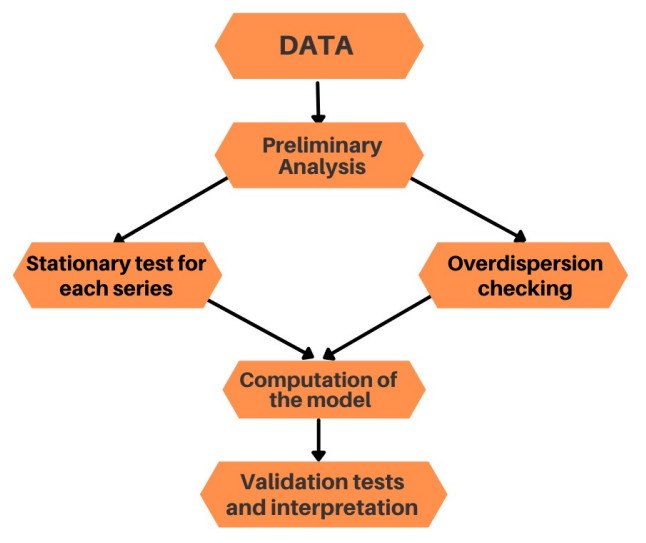
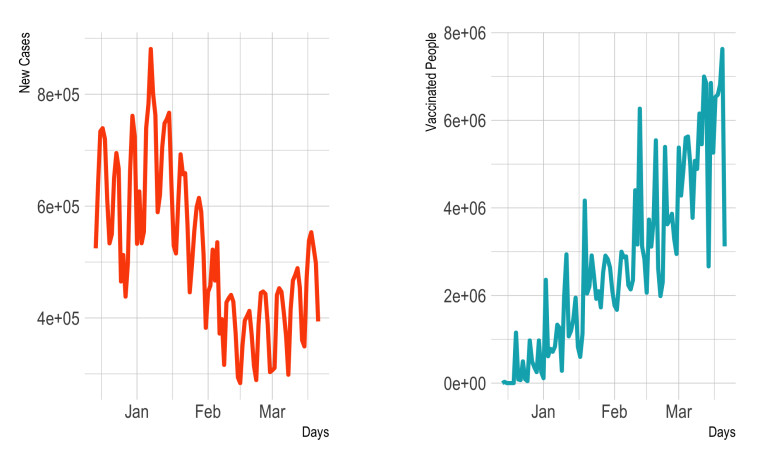
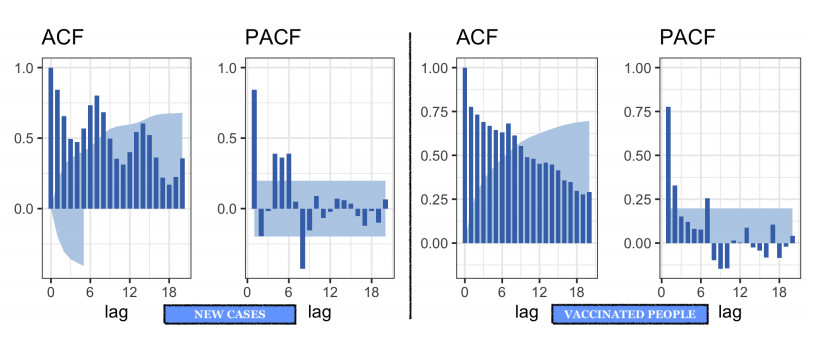
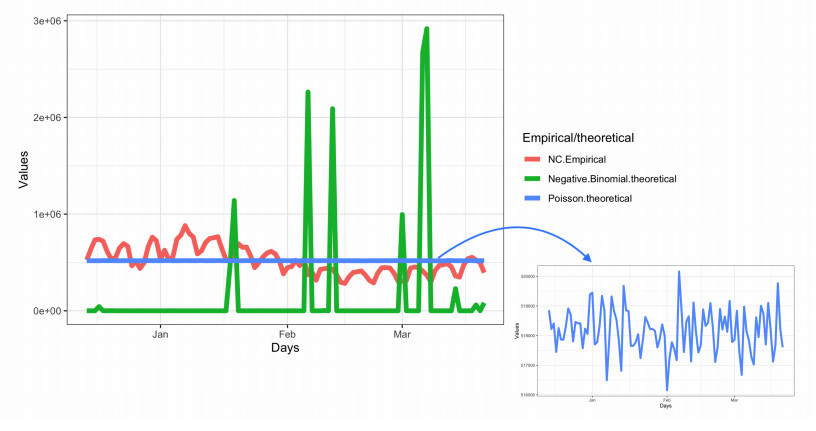
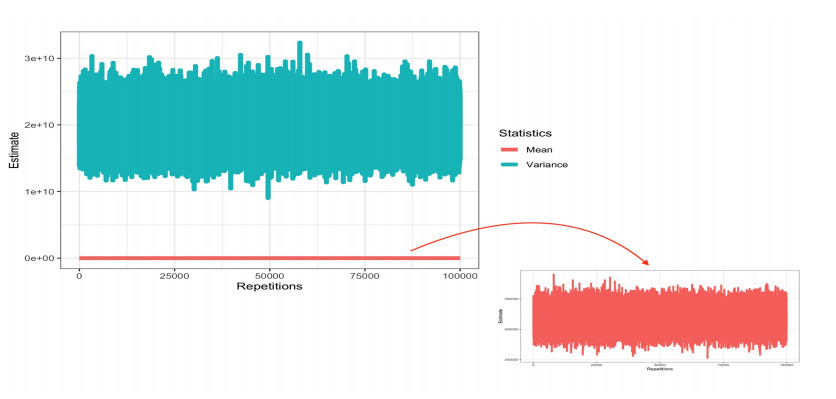


 DownLoad:
DownLoad: